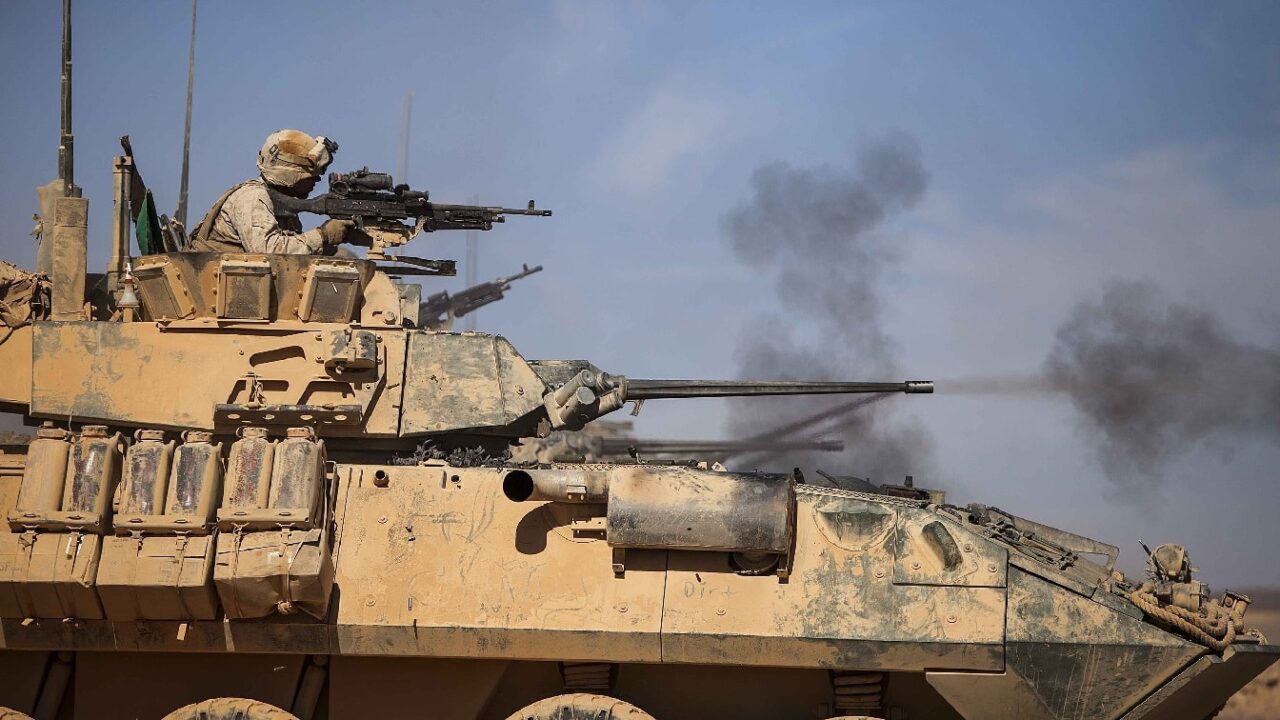A war between the US and Russia seems like a hellish prospect. And yet, it is now in the realm of possibility: The United States has so many powerful weapons systems that it is difficult to narrow it down to five–especially looking at weapons that could be used in combat against Russia. Nuclear weapons and their delivery systems have to be included. Plus, the new class of aircraft carriers and the latest aerial gunship should be reckoned with. It all can be very frightening to the enemy and lead to deterrence, which is half the battle.
Nonetheless, and you may disagree, here are my picks for the U.S. military’s 5 deadliest weapons of war.
The B83 Nuclear Bomb
The B83 nuclear bomb is the biggest device in the U.S. stockpile. It has a maximum delivery of 1.2 megatons – that’s 1.2 million tons of TNT. This is 80 times more powerful than the bombs dropped on Japan at the end of World War Two.
The B83 weighs 1.5 tons and entered service in 1983.
It’s an unguided bomb, in which gravity pulls it down to the target. It can be used for bunker-busting as well.
The Biden Administration wants to enable the B83 to have an extended life, therefore $99 million is earmarked for it in FY22.
Ohio-Class Submarines
The Ohio-class nuclear submarine is a “boomer” that carries nuclear missiles. It can deliver 10 Trident II D5 missiles. This three-stage solid-fueled missile can hit targets out to 4,000 nautical miles. There are 14-boomers in the fleet.
The hard to detect Ohio-class has two crews that alternate on duty, which enables more subs to engage in multiple patrols. The submarine stays out to sea an average of 77 days per mission.
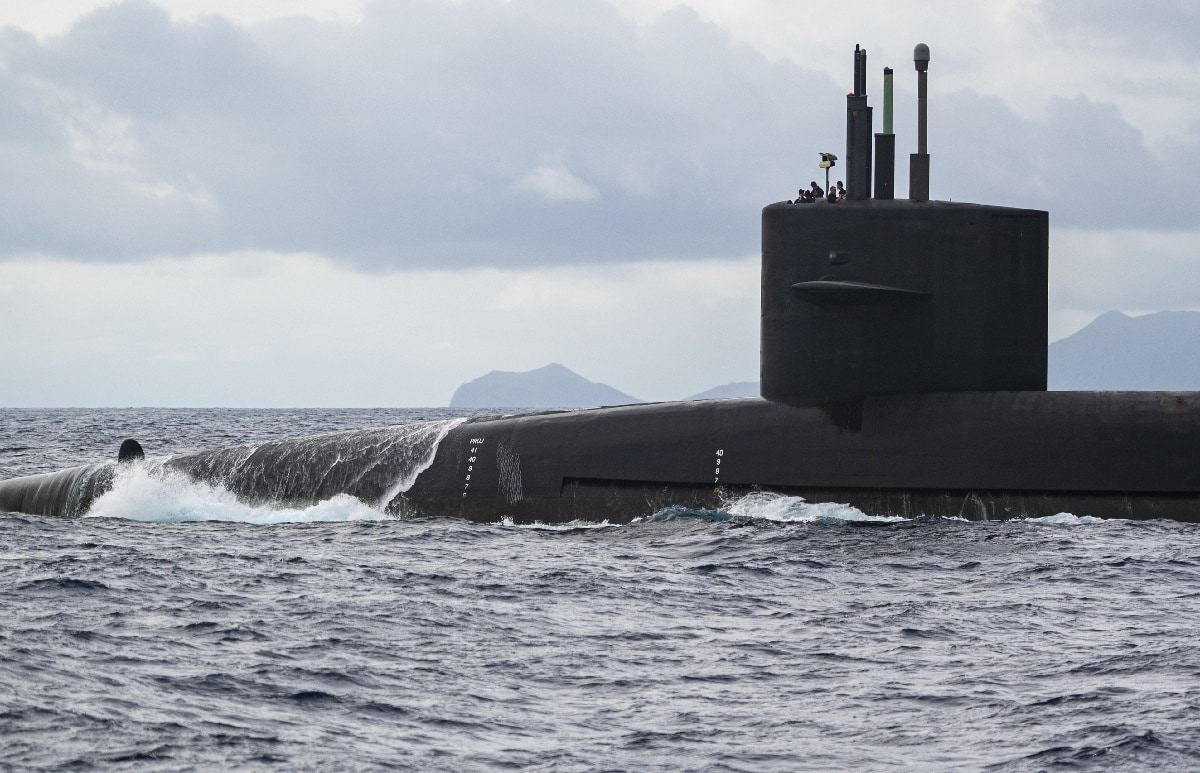
PACIFIC OCEAN (Oct. 21, 2020) The Ohio-class ballistic-missile submarine USS Henry M. Jackson (SSBN 730) gets in position to receive a payload of supplies from an MV-22B Osprey in the vicinity of the Hawaiian Islands. Underway replenishment sustains the fleet anywhere/anytime. This event was designed to test and evaluate the tactics, techniques, and procedures of U.S. Strategic Command’s expeditionary logistics and enhance the overall readiness of our strategic forces. (U.S. Navy photo by Mass Communication Specialist 1st Class Devin M. Langer)
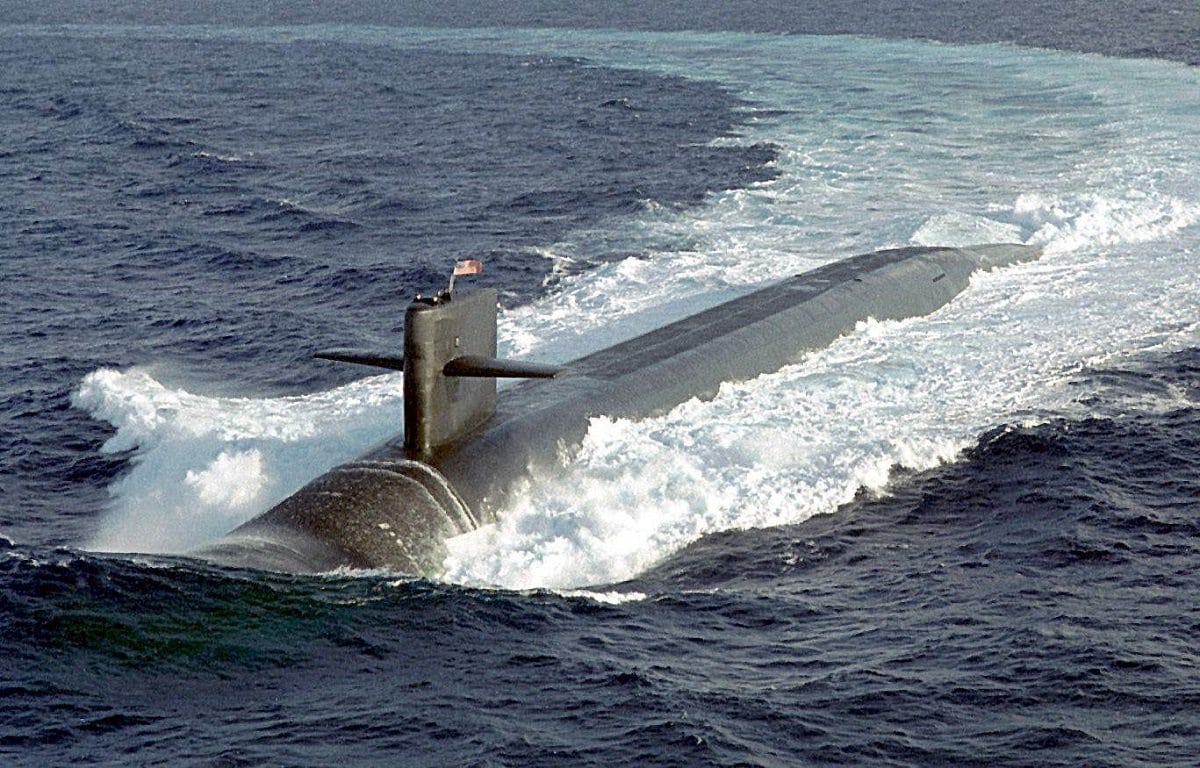
USS Maine (SSBN-741). Image: Creative Commons.
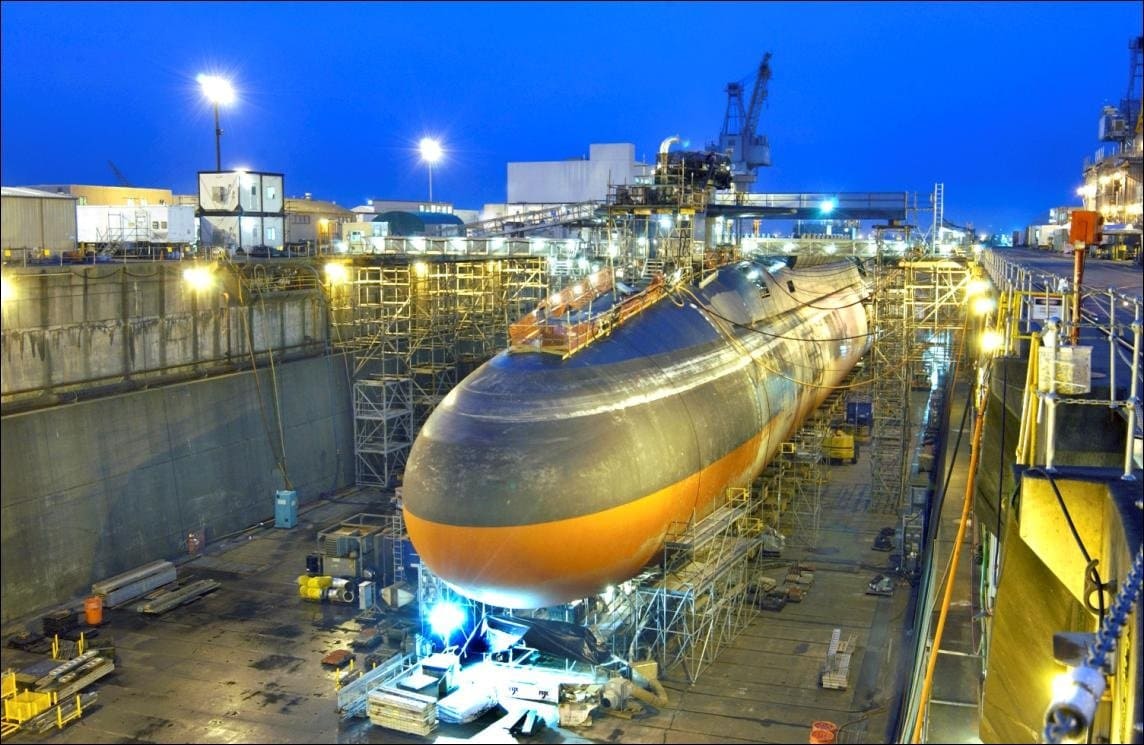
USS Ohio SSGN Conversion. “040315-N-0000H-001 Bremerton, Wash. (March 15, 2004) – Night falls at Puget Sound Naval Shipyard and Intermediate Maintenance Facility, Bremerton, Wash., as work continues on the strategic missile submarine USS Ohio (SSGN-726). The USS Ohio is one of four Trident Submarines undergoing conversion to a new class of guided missile submarines. The SSGN conversion program takes Ohio-class ballistic missile submarines through an extensive overhaul that will improve their capability to support and launch up to 154 Tomahawk missiles. They will also provide the capability to carry other payloads, such as unmanned underwater vehicles (UUVs), unmanned aerial vehicles (UAVs) and Special Forces equipment. This new platform will also have the capability to carry and support more than 66 Navy SEALs (SEa, Air and Land) and insert them clandestinely into potential conflict areas. U.S. Navy photo by Wendy Hallmark.
The Boomers can be easily re-supplied at sea. In 2014, the USS Pennsylvania set a record for patrolling 140 days. Some Ohio-class subs have been converted to carry Tomahawk cruise missiles allowing for extra room to deploy SEALs for clandestine missions.
The Block-V Tomahawk Cruise Missile
Tomahawk Block-Vs are the most improved cruise missiles in the U.S. arsenal. They can hit enemy ships over 1,000 miles away. The Block-Vs have a new warhead that penetrates better. The upgraded Tomahawks can be carried by naval guided-missile ships and attack and boomer submarines.
The Block-Vs are better able to survive against electronic countermeasures and they are more difficult to track on radar.
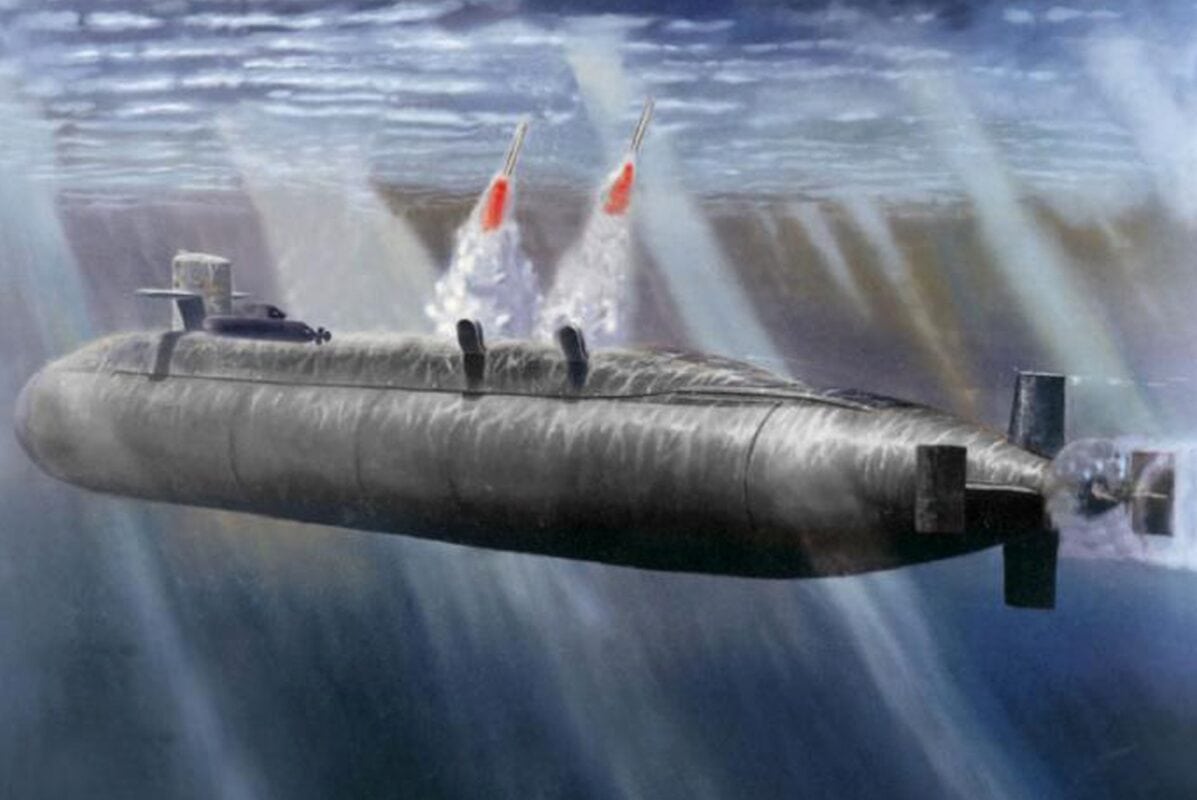
030814-N-0000X-003
Puget Sound Naval Shipyard, Wash. (Aug. 14, 2003) — Illustration of USS Ohio (SSGN 726) which is undergoing a conversion from a Ballistic Missile Submarine (SSBN) to a Guided Missile Submarine (SSGN) designation. Ohio has been out of service since Oct. 29, 2002 for conversion to SSGN at Puget Sound Naval Shipyard. Four Ohio-class strategic missile submarines, USS Ohio (SSBN 726), USS Michigan (SSBN 727) USS Florida (SSBN 728), and USS Georgia (SSBN 729) have been selected for transformation into a new platform, designated SSGN. The SSGNs will have the capability to support and launch up to 154 Tomahawk missiles, a significant increase in capacity compared to other platforms. The 22 missile tubes also will provide the capability to carry other payloads, such as unmanned underwater vehicles (UUVs), unmanned aerial vehicles (UAVs) and Special Forces equipment. This new platform will also have the capability to carry and support more than 66 Navy SEALs (Sea, Air and Land) and insert them clandestinely into potential conflict areas. U.S. Navy illustration. (RELEASED)
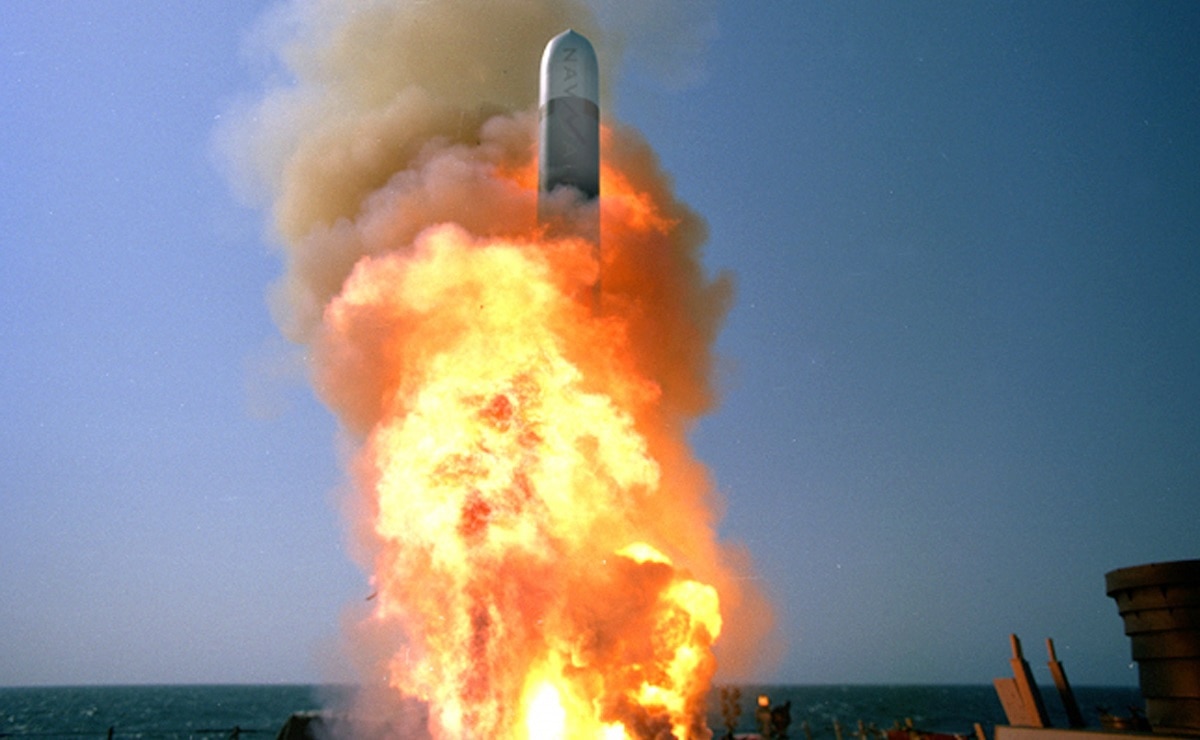
030508-N-0000X-001
At sea aboard USS Stethem (DDG 63) Ð A Tactical Tomahawk Cruise Missile launches from the guided missile destroyer USS Stethem (DDG 63) during a live-warhead test. The missile traveled 760 nautical miles to successfully impact itÕs intended target on San Clemente Island, part of the Naval Air Systems Command (NAVAIR) test range in Southern California. The Tactical Tomahawk is the next generation of Tomahawk cruise missile, adds the capability to reprogram the missile while in-flight to strike any of 15 preprogrammed alternate targets, or redirect the missile to any Global Positioning System (GPS) target coordinates. It also will be able to loiter over a target area for some hours, and with its on-board TV camera, will allow the war fighting commanders to assess battle damage of the target, and, if necessary redirect the missile to any other target. Launched from the Navy’s forward-deployed ships and submarines, Tactical Tomahawk will provide a greater flexibility to the on-scene commander. Tactical Tomahawk is scheduled to join the fleet in 2004. U.S. Navy photo. (RELEASED)
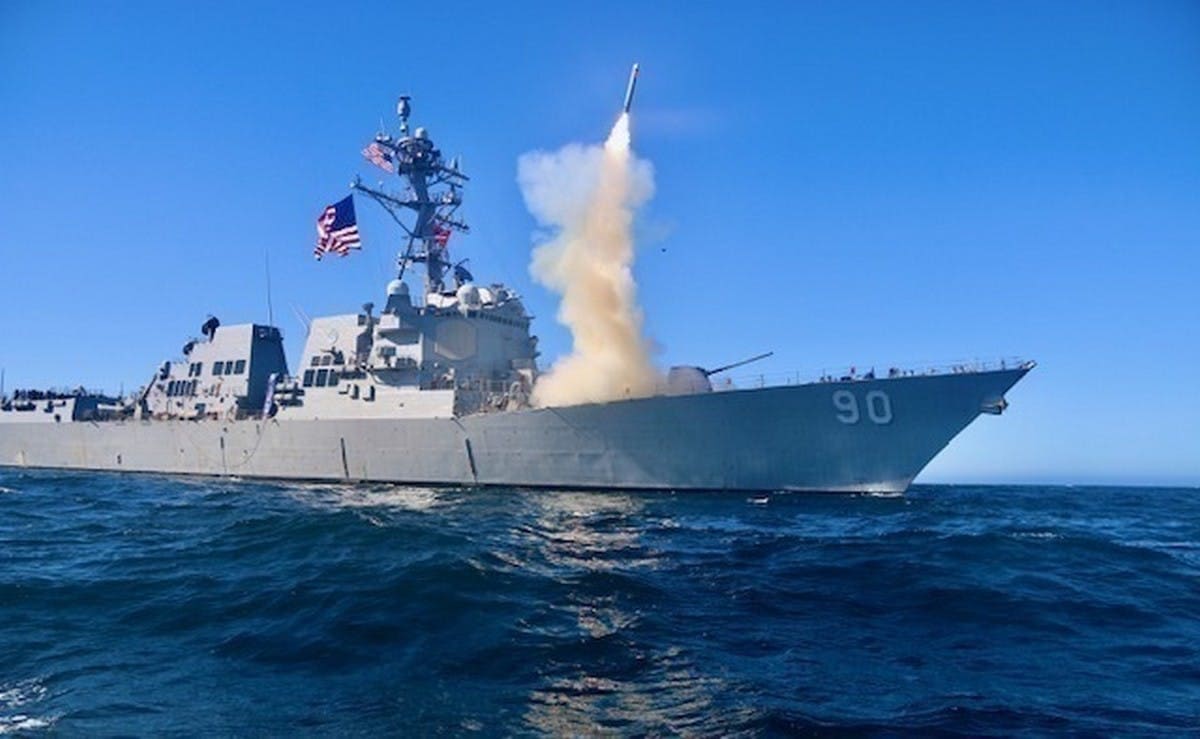
Image: Creative Commons.
The new Tomahawks are adept at hitting moving targets. The Block V also has improved targeting for land-attack missions.
The Ford-class Super Carrier
The Ford-class can carry 85 aircraft – that is more than some countries’ entire air forces. This includes the F-35C Lightning II, E-2D Advanced Hawkeye, and the V-22B Osprey, plus the F/A-18E and F/A-18F Super Hornet fighters, and the EA-18G Growler electronic warfare airplane.
The new carrier has two nuclear reactors and four shafts that will require less maintenance. It can conduct 33 percent more sorties than the Nimitz-class. It has improved electricity generation that would allow it to use directed-energy weapons in the future.
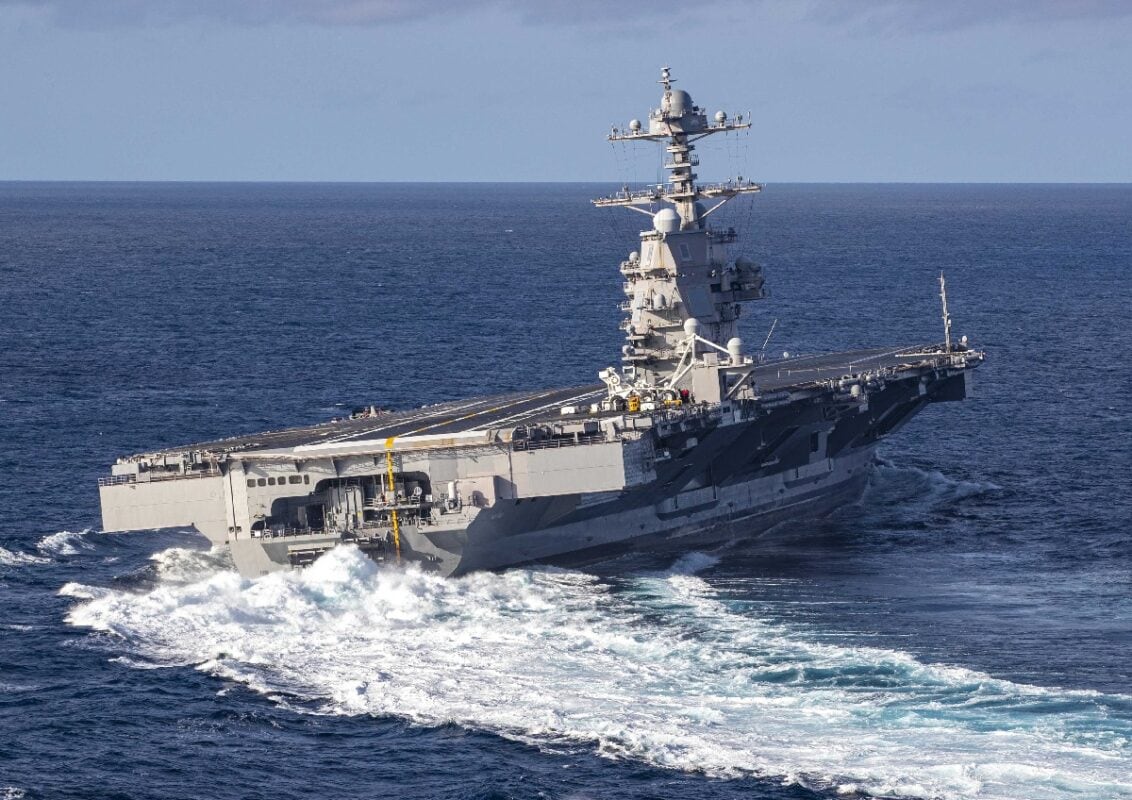
Image: Creative Commons.
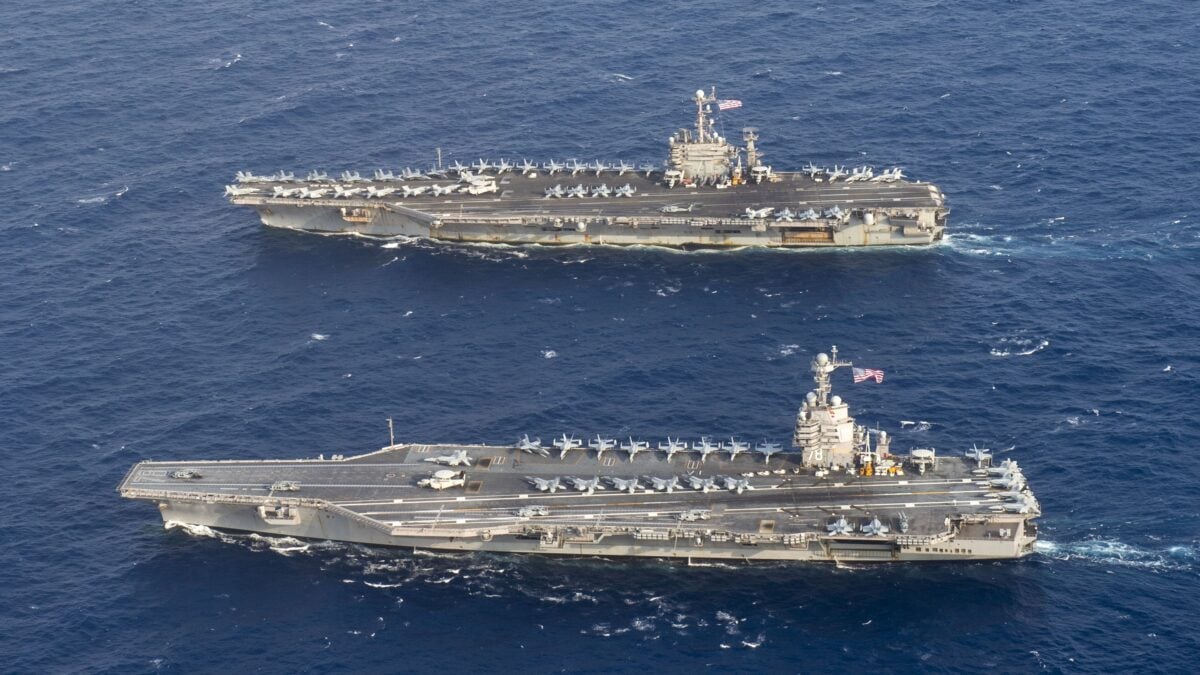
The U.S. Navy Gerald R. Ford-class aircraft carrier USS Gerald R. Ford (CVN-78) and the Nimitz-class aircraft carrier USS Harry S. Truman (CVN-75) underway in the Atlantic Ocean on 4 June 2020, marking the first time a Gerald R. Ford-class and a Nimitz-class aircraft carrier operated together underway. Gerald R. Ford is underway conducting integrated air wing operations, and the Harry S. Truman Carrier Strike Group remained at sea in the Atlantic as a certified carrier strike group force ready for tasking in order to protect the crew from the risks posed by COVID-19, following their successful deployment to the U.S. 5th and 6th Fleet areas of operation.
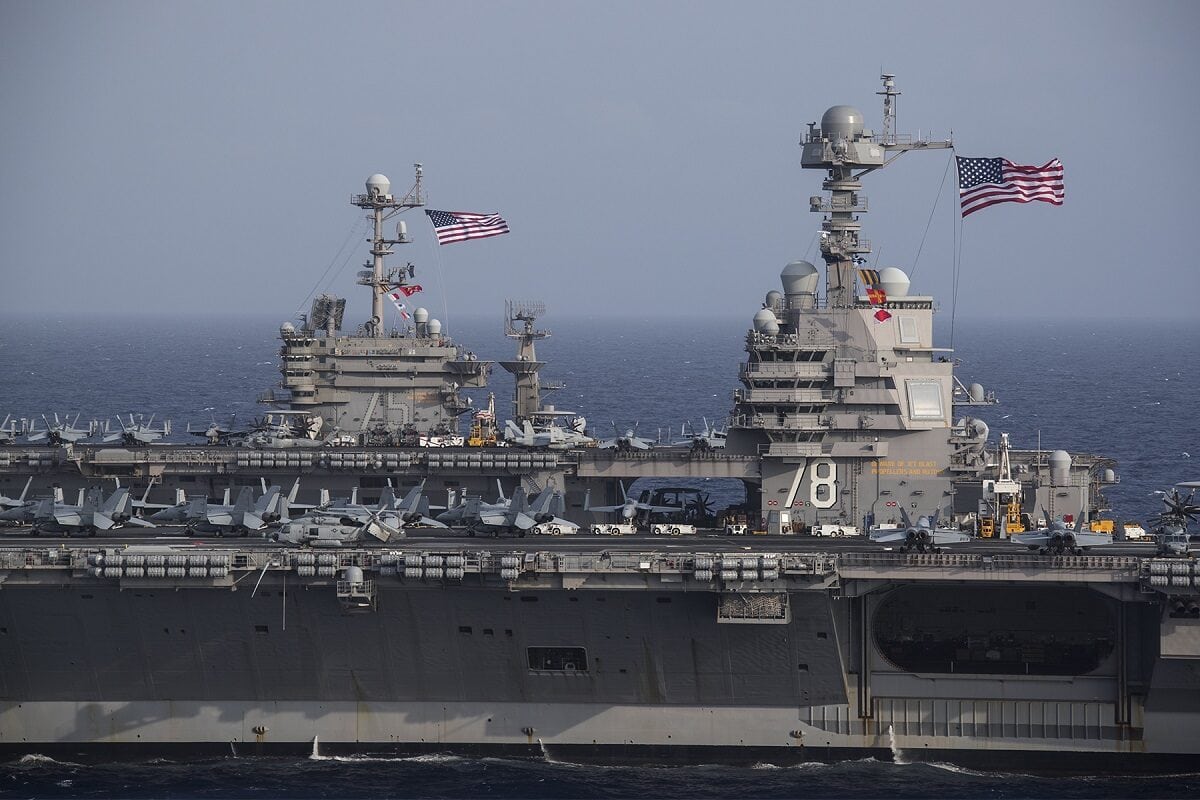
200604-N-QI093-1142
ATLANTIC OCEAN (June 4, 2020) The Ford-class aircraft carrier USS Gerald R. Ford (CVN 78) and the Nimitz-class aircraft carrier USS Harry S. Truman (CVN 75) transit the Atlantic Ocean, June 4, 2020, marking the first time a Ford-class and a Nimitz-class aircraft carrier have operated together underway. Gerald R. Ford is underway conducting integrated air wing operations and the Harry S. Truman Carrier Strike Group remains at sea in the Atlantic Ocean as a certified carrier strike group force ready for tasking in order to protect the crew from the risks posed by COVID-19, following their successful deployment to the U.S. 5th and 6th Fleet areas of operation. (U.S. Navy photo by Mass Communication Specialist 2nd Class Ruben Reed/Released
The Navy has deployed a new catapult system and arresting gear on the Ford-class, which uses electromagnetics instead of steam.
The AC-130 Gunship
The AC-130U “Spooky” Gunship is overwhelmingly deadly. It features a 40mm cannon, a 105mm howitzer and a 25mm gatling gun. It features a day, night, and all-weather combat system. It has video sensors, infrared sensors, and synthetic aperture radar.
The AC-130U can help friendly troops who are pinned down, escort convoys to help if ambushed, and conduct armed reconnaissance to engage targets of opportunity. The airplane loiters and flies huge circles around the targets. It releases flares to spoof enemy heat-seeking SAMs.
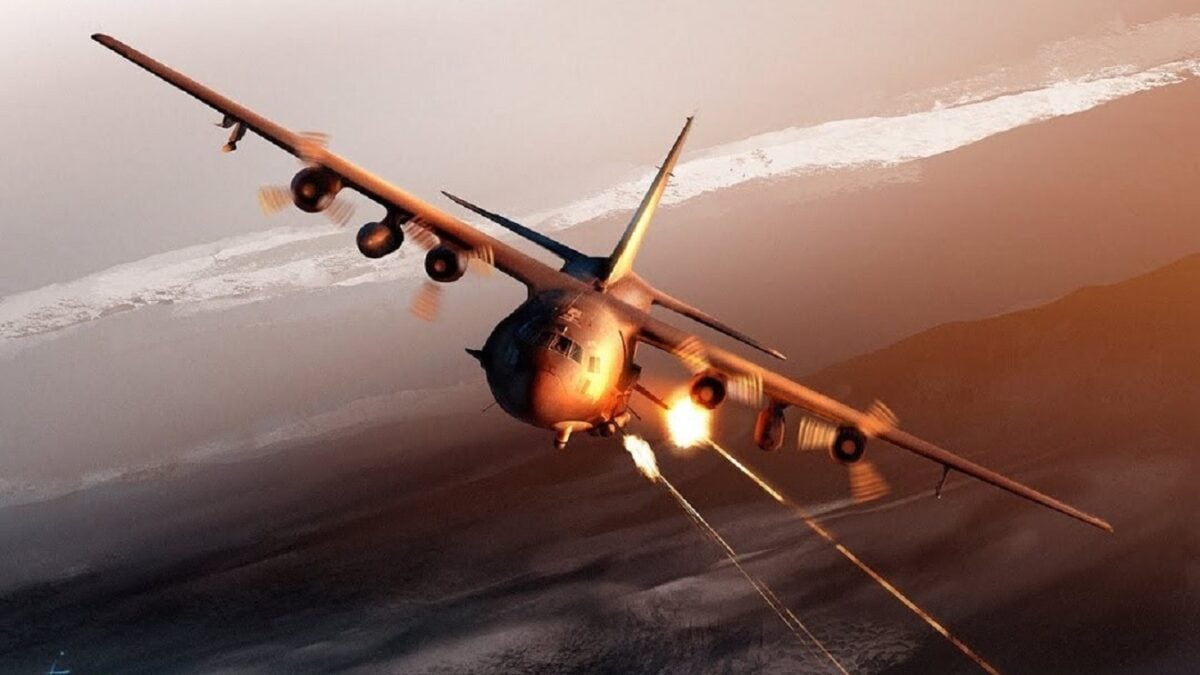
AC-130 Gunship. Image Credit: Creative Commons.

A KC-135R Stratotanker from the 465th Air Refueling Squadron at Tinker Air Force Base, Oklahoma, flies above a AC-130W Stinger from the 16th Special Operations Squadron at Cannon Air Force Base. (U.S. Air Force photo by Senior Airman Mary Begy)
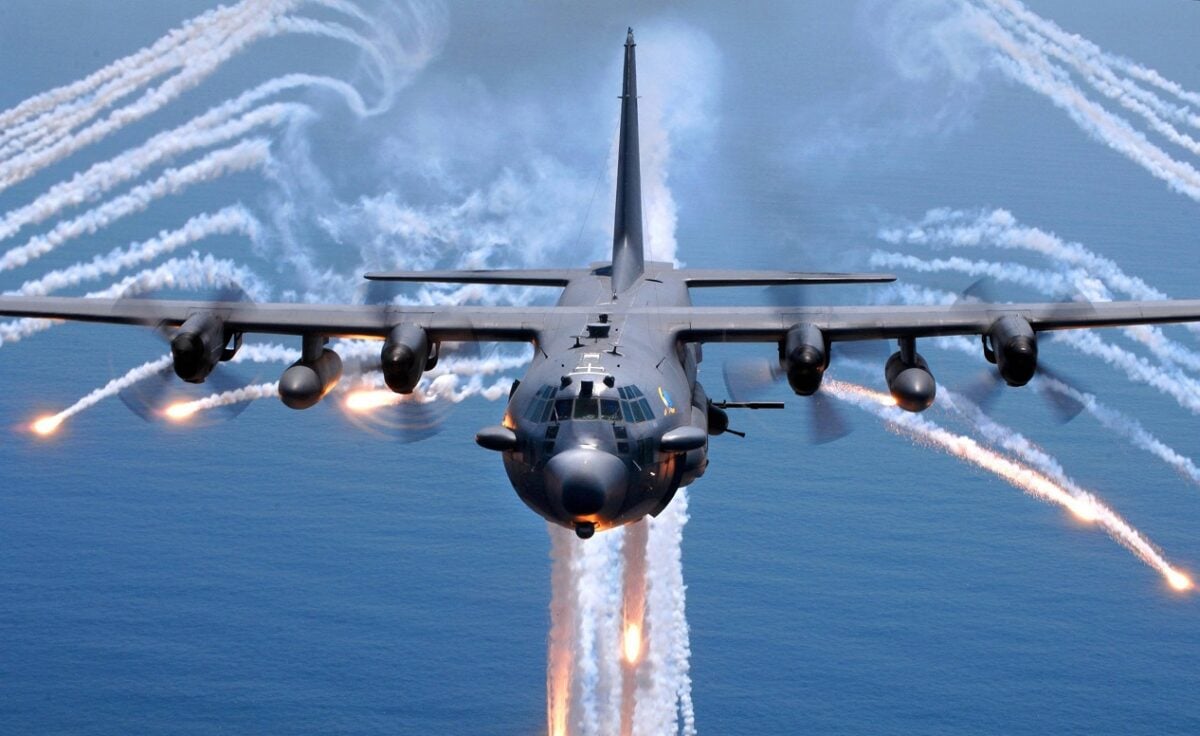
AC-130. Image Credit: Creative Commons.
US Military’s Most Powerful Weapons of War: Who Takes the Top Spot?
First place would have to go to the Ohio-class submarine, just because it can deliver the most nuclear weapons. Obviously, the B83 nuclear bomb is the most powerful. The Tomahawk cruise missile has proved its worthiness for years. The AC-130U Gunship is one of the most fearsome weapons, while the Ford-class Super Carrier is expensive but worth it.
1945’s new Defense and National Security Editor, Brent M. Eastwood, PhD, is the author of Humans, Machines, and Data: Future Trends in Warfare. He is an Emerging Threats expert and former U.S. Army Infantry officer.

